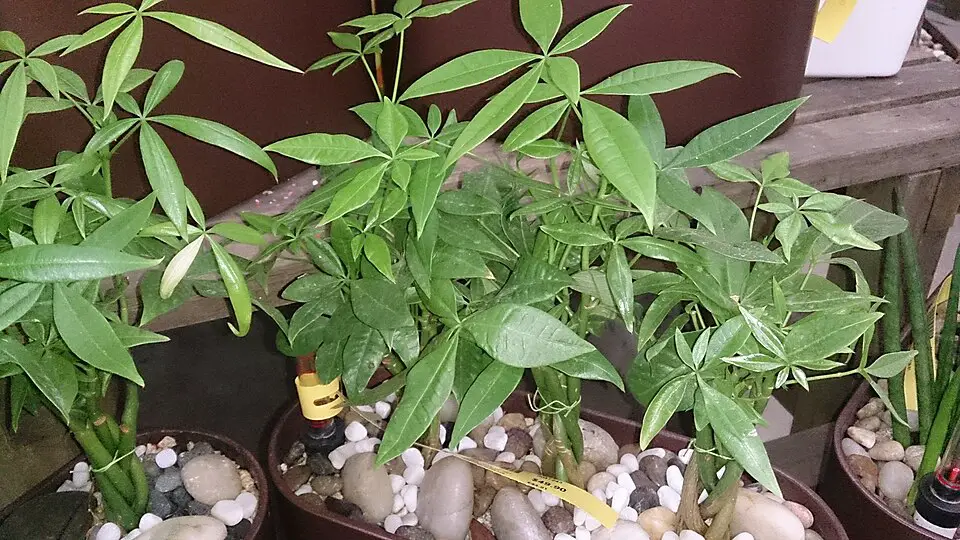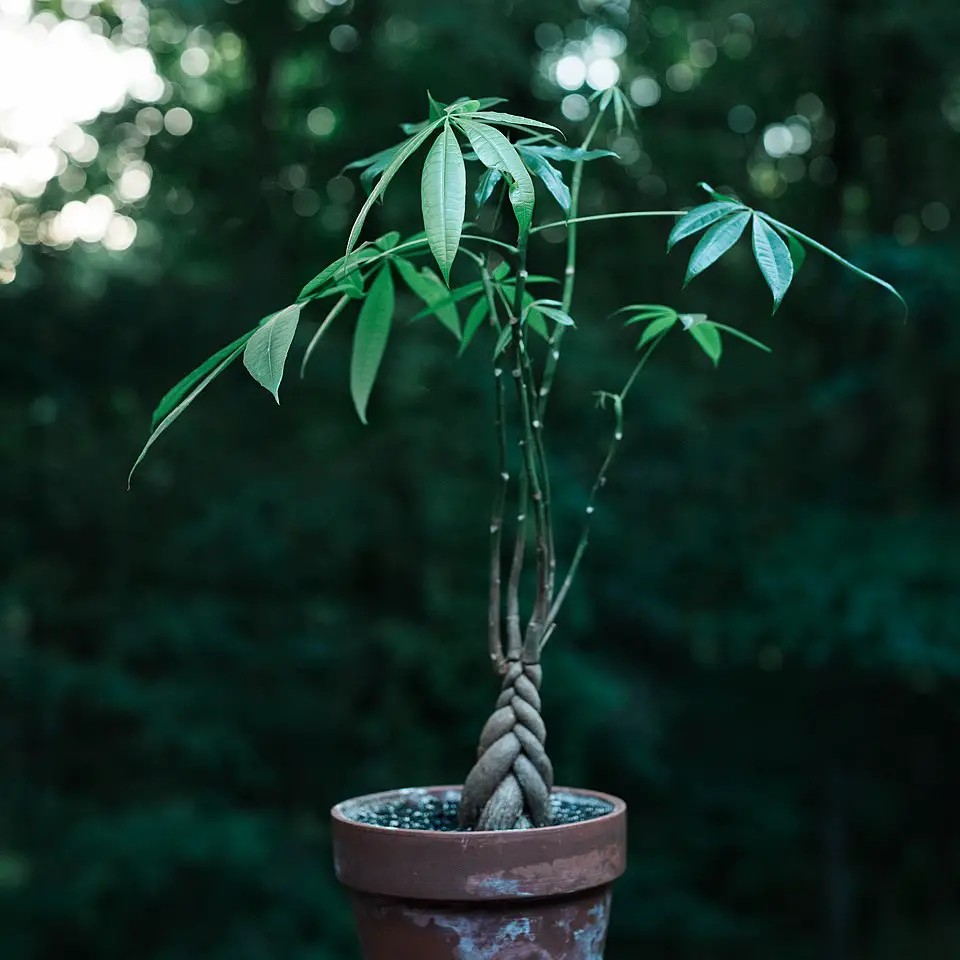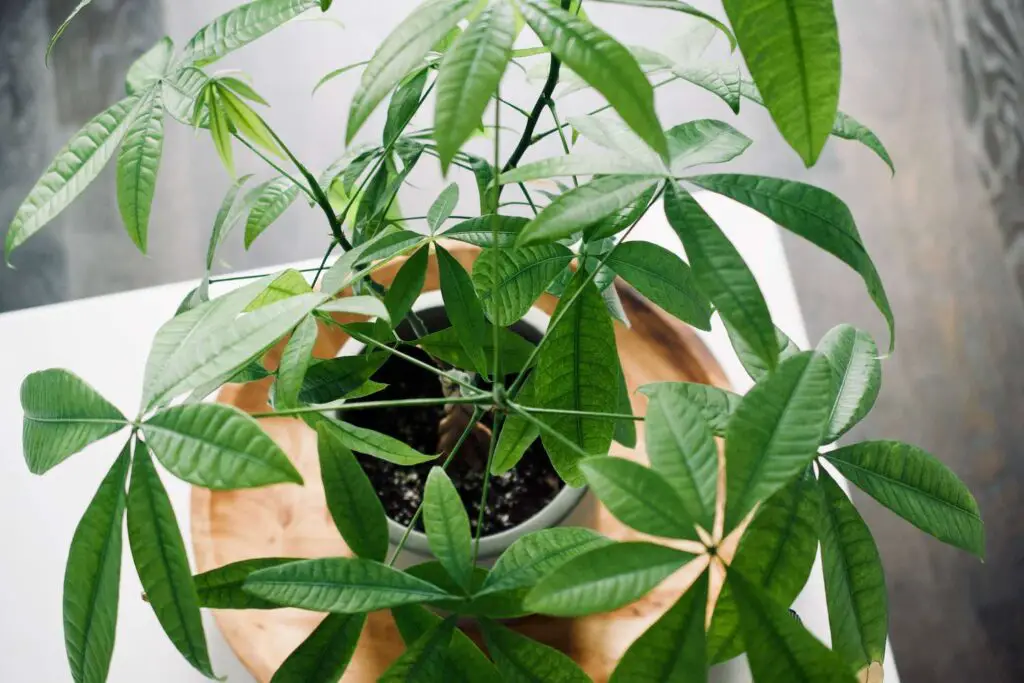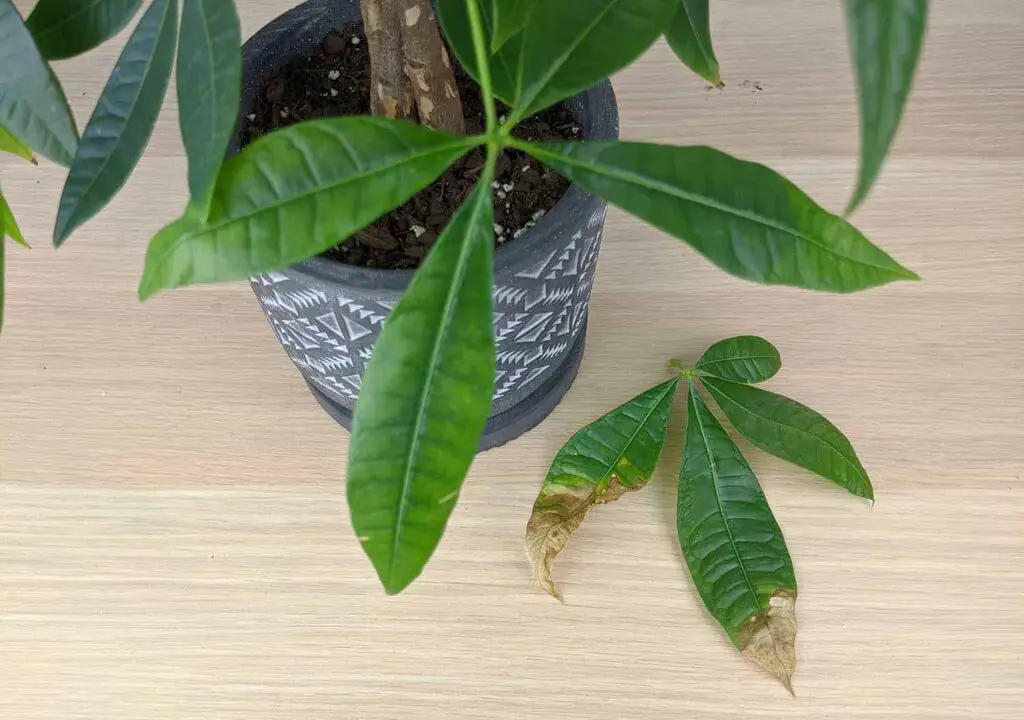To prune a Money Tree for proper growth, start by removing any dead or yellowing leaves. Trim long, leggy branches to encourage bushier growth. Always use clean, sharp tools to prevent damage and disease. Prune during the growing season, typically in spring or early summer, for the best results.
Understanding the Money Tree
The Money Tree, scientifically known as Pachira aquatica, is a popular houseplant cherished for its beautiful foliage and reputed ability to attract good luck and prosperity. Native to Central and South America, this plant has gained popularity worldwide due to its unique braided trunks and glossy leaves. With the right care, including proper pruning, a Money Tree can thrive and become a stunning centerpiece in any indoor space.

Pruning is an essential part of maintaining a healthy Money Tree. It helps to control the size of the plant, encourages bushier growth, and removes any unhealthy parts. By regularly pruning your Money Tree, you can promote better air circulation and light penetration, which are crucial for healthy growth.
When to Prune Your Money Tree
The best time to prune a Money Tree is during its active growth period, which typically occurs in spring and early summer. During these months, the plant is rejuvenating and can recover quickly from pruning stress. Pruning during the dormant months, such as fall or winter, may hinder the plant’s recovery and growth.
Tools Needed for Pruning
Before you begin the pruning process, it’s essential to gather the right tools. Using the proper equipment ensures clean cuts that minimize damage to the plant. Here are some recommended tools:

- Sharp Pruning Shears: These will help you make clean cuts without crushing the stems.
- Disinfectant: Use rubbing alcohol or bleach solution to sanitize your pruning tools before use.
- Gloves: Protect your hands from sap and any potential irritants.
Steps to Prune a Money Tree
Pruning a Money Tree involves several simple steps. Following these will ensure that your plant remains healthy and vibrant:
- Inspect the Plant: Look for any dead or yellowing leaves and long, leggy branches that need trimming.
- Prepare Tools: Sanitize your pruning shears to prevent disease transmission.
- Start with Leaves: Remove any dead or discolored leaves by cutting them off at the base of the stem.
- Trim Branches: Identify branches that are growing too long or unevenly. Cut them back to promote a balanced shape.
- Monitor Progress: Step back occasionally to check if the shape of the tree is developing as desired.
- Cleansing: After pruning, clean up fallen leaves and debris around the base of the plant.
Benefits of Pruning
Regular pruning offers numerous benefits for your Money Tree. Some of these include:
- Enhanced Growth: Pruning encourages new growth and improves the overall health of the plant.
- Better Aesthetics: A well-pruned Money Tree looks more appealing and fits better in your home decor.
- Pest Control: Removing dead leaves and branches helps reduce the risk of pests and diseases.
Common Mistakes to Avoid
While pruning may seem straightforward, there are common mistakes that many people make. Avoid these pitfalls to ensure your Money Tree stays healthy:

- Over-Pruning: Removing too much foliage can stress the plant and hinder growth.
- Pruning at the Wrong Time: Pruning during dormancy can slow down recovery and growth.
- Using Dull Tools: Dull tools can crush stems rather than make clean cuts, leading to potential damage.
By understanding how to properly prune your Money Tree, you can help it flourish in your home for years to come. Regular maintenance will not only keep your plant looking its best but also contribute positively to its overall health and vitality.
Signs That Your Money Tree Needs Pruning
Recognizing when your Money Tree requires pruning is essential for maintaining its health. There are several signs that indicate it’s time to grab your pruning shears:
- Yellowing Leaves: If you notice leaves turning yellow and falling off, it may be a sign of stress. Pruning can help remove unhealthy foliage.
- Leggy Growth: When branches grow long with sparse leaves, the plant is likely stretching for more light. Pruning can encourage denser growth.
- Pest Presence: If pests are visible on the leaves or stems, removing affected areas can help control their spread.
- Unbalanced Shape: If the Money Tree has an uneven shape, pruning can restore balance and aesthetics.
Techniques for Effective Pruning
Employing the right techniques during pruning can significantly affect the health of your Money Tree. Here are some effective methods to consider:
1. Clean Cuts
Always aim for clean cuts when pruning. This reduces the risk of injury to the plant and helps prevent disease. Avoid crushing the stems and leaves by using sharp shears.

2. Cut at an Angle
When trimming branches, make cuts at a slight angle. This encourages water runoff and prevents moisture from pooling on the cut surface, reducing the chance of rot.
3. Remove Unhealthy Parts First
Prioritize removing dead or dying leaves and branches. This action not only improves the appearance of the plant but also allows it to focus its energy on healthier growth.
4. Thin Out Crowded Areas
If your Money Tree has crowded growth, selectively thin out branches to improve air circulation. This can help prevent mold and mildew.
After Pruning Care
Proper care after pruning is crucial for your Money Tree’s recovery and growth. Here are some tips to follow:
- Watering: After pruning, ensure the plant is adequately watered but avoid overwatering. Allow the soil to dry slightly between waterings.
- Light Conditions: Place your Money Tree in a location where it receives indirect sunlight to promote recovery without stressing it further.
- Nutrient Boost: Consider applying a balanced fertilizer a few weeks after pruning to support new growth.
- Monitoring: Keep an eye on the plant for any signs of distress or disease following pruning. Early detection is key to addressing issues promptly.
Pruning for Shape and Style
Apart from health reasons, pruning can also be used to shape your Money Tree for aesthetic appeal. Here are some techniques to customize its look:
1. Creating a Bushier Plant
If you prefer a fuller appearance, cut back the tips of the branches. This encourages side branching and leads to denser foliage.
2. Maintaining Height
If you want to control the height of your Money Tree, prune back longer branches. This not only keeps the plant at a manageable size but also promotes a more compact structure.
3. Braiding Trunks
If your Money Tree has multiple trunks, you can braid them together as they grow. Regular pruning will help maintain this style while allowing each trunk to develop healthily.
Seasonal Pruning Tips
The timing of your pruning is important for achieving optimal results. Here are some seasonal tips:
Spring Pruning
This is the ideal time for major pruning activities as the Money Tree is waking up from dormancy. Focus on removing unhealthy growth and shaping the plant.
Summer Maintenance
In summer, monitor your plant closely. You can do light pruning to maintain shape and remove any unwanted growth that appears.
Fall and Winter Care
Avoid heavy pruning in fall and winter as the plant is in a dormant phase. Only remove any dead or diseased parts during these months to minimize stress.
By recognizing when your Money Tree needs attention and applying proper techniques, you can ensure that it remains healthy and visually appealing throughout the year.
Common Pests and Diseases Affecting Money Trees
Even with proper care and pruning, Money Trees can be susceptible to various pests and diseases. Identifying these issues early is crucial for maintaining the health of your plant. Here are some common problems to watch out for:
1. Spider Mites
Spider mites are tiny pests that can cause significant damage to your Money Tree. They thrive in dry conditions and can lead to leaf discoloration and webbing on the plant.
- Signs: Yellow speckling on leaves, fine webbing, and leaf drop.
- Management: Increase humidity around the plant, use insecticidal soap, or wipe leaves with a damp cloth.
2. Mealybugs
Mealybugs are small, white insects that often appear in clusters. They feed on the sap of your Money Tree, weakening it over time.
- Signs: Cotton-like masses on stems and leaves, stunted growth, and leaf drop.
- Management: Remove mealybugs with a cotton swab dipped in alcohol, or use a horticultural oil spray.
3. Scale Insects
Scale insects can be hard to spot due to their protective shells. Like mealybugs, they extract sap from the plant, leading to a decline in health.
- Signs: Sticky residue on leaves (honeydew), yellowing leaves, and sooty mold.
- Management: Gently scrape them off with your fingernail or use a soft brush. Insecticidal soap can also be effective.
4. Root Rot
Root rot is a common disease caused by overwatering or poorly draining soil. It can severely damage the roots and may lead to plant death if not addressed quickly.
- Signs: Wilting leaves, yellowing foliage, and a foul smell from the soil.
- Management: Allow the soil to dry out before watering again, and ensure proper drainage by using well-draining potting mix.
Fertilizing Your Money Tree
Regular fertilization supports the overall health of your Money Tree and encourages vigorous growth. Here are some guidelines for fertilizing:
When to Fertilize
The best time to fertilize your Money Tree is during its growing season, which typically runs from spring to early fall. During this time, the plant is actively absorbing nutrients.
Types of Fertilizers
Selecting the right type of fertilizer is essential for the health of your Money Tree. Here are some options:
- Balanced Liquid Fertilizer: A balanced formula with equal parts nitrogen, phosphorus, and potassium (NPK) is ideal for general growth.
- Slow-Release Granular Fertilizer: This type gradually releases nutrients over time, reducing the frequency of applications.
- Organic Options: Consider using compost tea or fish emulsion for a natural approach to feeding your plant.
How to Apply Fertilizer
When applying fertilizer, follow these steps for best results:
- Dilute Liquid Fertilizer: Mix the fertilizer with water according to the package instructions.
- Apply Evenly: Pour the diluted fertilizer around the base of the plant, avoiding direct contact with the stems and leaves.
- Avoid Over-Fertilization: Too much fertilizer can lead to salt buildup and harm the plant. It’s better to under-fertilize than over-fertilize.
Repotting Your Money Tree
Repotting is an essential task for maintaining a healthy Money Tree. As the plant grows, it may outgrow its pot and require more space for roots to expand. Here’s how to approach repotting:
When to Repot
The best time to repot your Money Tree is during the spring when it is actively growing. Signs that it’s time to repot include:
- Roots are growing through drainage holes.
- The plant has become top-heavy or unstable in its current pot.
- The soil dries out too quickly after watering.
Steps for Repotting
Follow these steps to successfully repot your Money Tree:
- Select a New Pot: Choose a pot that is one size larger than the current one with drainage holes.
- Add Fresh Soil: Fill the bottom of the new pot with fresh, well-draining potting mix.
- Remove the Plant: Gently remove your Money Tree from its current pot without damaging the roots.
- Place in New Pot: Position the plant in the center of the new pot and fill in around it with soil.
- Water Thoroughly: Water the plant well after repotting to help settle the soil and eliminate air pockets.
Caring for your Money Tree through proper pruning, pest management, fertilization, and repotting will ensure it remains healthy and thriving in your home environment.
Additional Tips for Pruning and Caring for Your Money Tree
<
p>To ensure your Money Tree continues to thrive, consider these additional tips that complement the pruning process and overall care:
1. Regular Monitoring
Keep an eye on your Money Tree’s growth and health. Regularly check for signs of pests, diseases, or nutrient deficiencies. Early detection allows for timely intervention, which can prevent minor issues from becoming significant problems.
2. Adjusting Watering Schedule
Watering needs may change with the seasons and environmental conditions. During the active growth phase in spring and summer, your Money Tree may require more frequent watering. Conversely, during fall and winter, reduce the frequency to avoid overwatering.
3. Provide Adequate Light
Money Trees prefer bright, indirect light. If your plant is not receiving enough light, consider relocating it to a brighter area. However, be cautious of direct sunlight, as it can scorch the leaves. A south or east-facing window is often ideal.
4. Humidity Considerations
Money Trees thrive in a humid environment. If your home is particularly dry, especially in winter, consider increasing humidity around the plant. You can do this by:
- Using a humidifier in the room.
- Placing a tray of water near the plant.
- Misting the leaves occasionally, though avoid excessive moisture on the foliage.
5. Seasonal Adjustments
As seasons change, adapt your care routine accordingly. For example, during the growing season, you may want to fertilize more frequently, while in winter, focus on limiting water and fertilizer to allow for dormancy.
Final Thoughts
Caring for a Money Tree involves more than just occasional pruning. By understanding its needs and recognizing signs of distress, you can maintain a vibrant and healthy plant. Regular pruning encourages growth and enhances its aesthetic appeal, while proper watering, lighting, and humidity create an optimal environment for development.
To summarize key takeaways:
- Prune during the growing season to promote bushier growth and remove unhealthy parts.
- Watch for signs of pests and diseases, addressing them promptly.
- Fertilize during active growth periods with appropriate nutrients.
- Repot as needed to provide adequate space for roots to expand.
- Adjust care routines based on seasonal changes.
Your Money Tree can be a rewarding addition to your home or office when provided with proper care. With its unique appearance and lore surrounding good fortune, it not only beautifies your space but also enhances your overall well-being. By following these guidelines, you will cultivate a thriving Money Tree that can bring joy for years to come.
